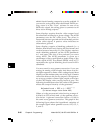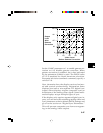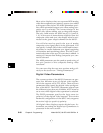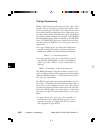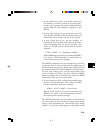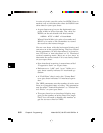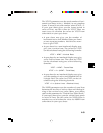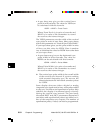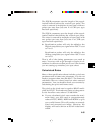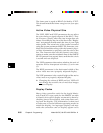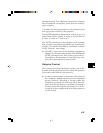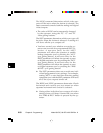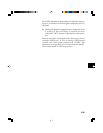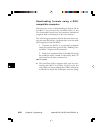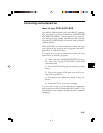
6-54 Chapter 6: Programming
Model 801GC, 801GF & 801GX¥Rev. A
• A spec sheet may give you the vertical front
porch in milli-seconds. The value for VSPD can
be calculated with this formula:
VSPD = HRAT x Front Porch
Where Front Porch is in units of seconds and
HRAT is in units of Hz. Remember to round
the result to the nearest integer.
The VSPW parameter sets the width of the vertical
sync pulse in units of scan lines. Many spec sheets
refer to this parameter as “Vertical Sync Pulse Width.”
If your spec sheet gives you the pulse width in units
of lines, use this value for VSPW. Here is another
way to calculate the value for HSPW from other data
on your spec sheet:
• A spec sheet may give you the horizontal sync
pulse width in micro-seconds. The value for
HSPW can be calculated with this formula:
VSPW = HRAT x Pulse Width
Where Pulse Width is in units of seconds and
HRAT is in units of Hz. Remember to round
the result to the nearest integer.
❖ The vertical sync pulse width is the overall width
of the vertical sync interval if you are working
with serrated composite sync. Do not use the
distance between the individual serration pulses
for VSPW.
Some displays that use either a digital or analog
composite sync signal need to have extra pulses added
to the sync. Serration and equalization pulses help
stabilize the display’s horizontal sweep circuitry
during the vertical sync interval. The previously
discussed DSCT and ASCT parameters determine if
serrations and equalization pulses are added to ei-
ther of the composite sync outputs. The number of
equalization pulses, if used, can also be programmed.



